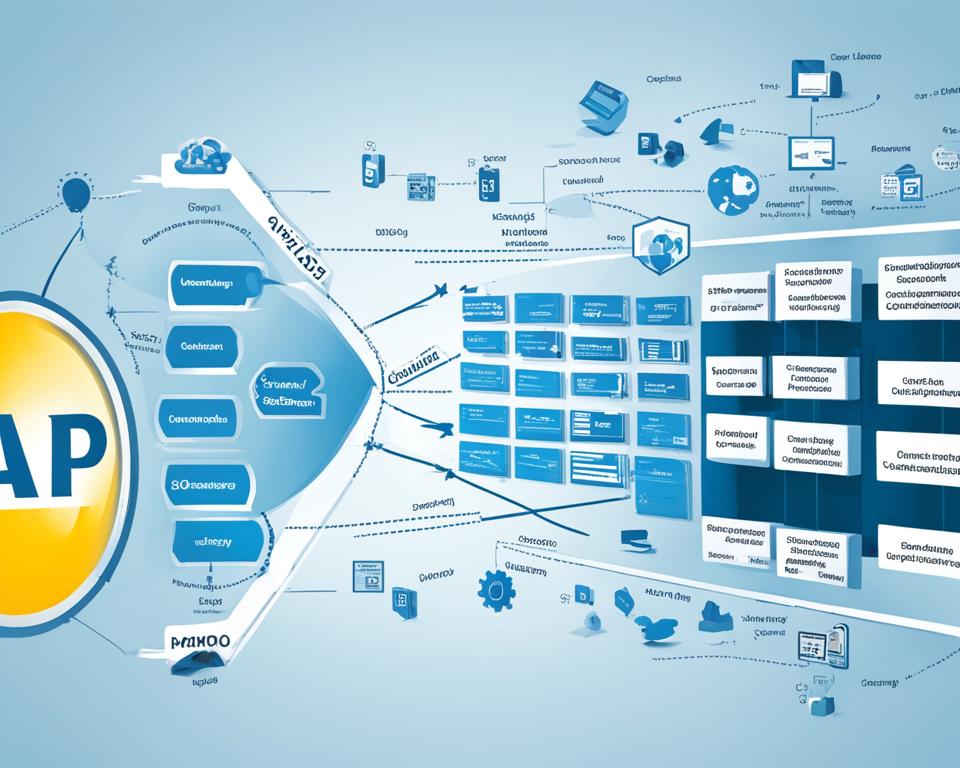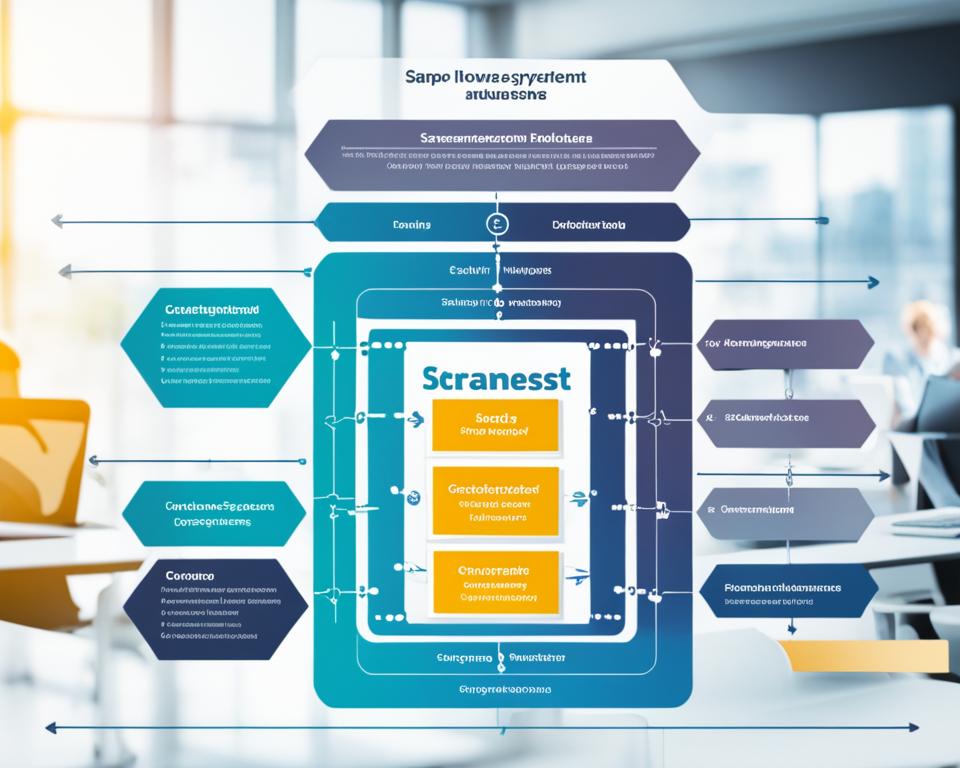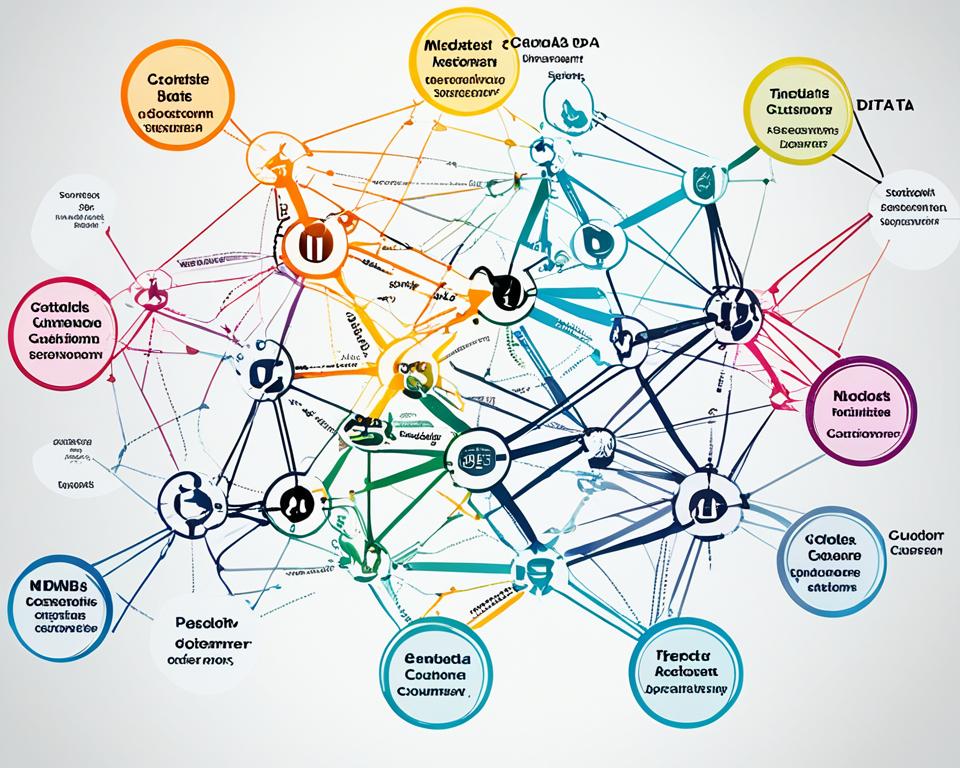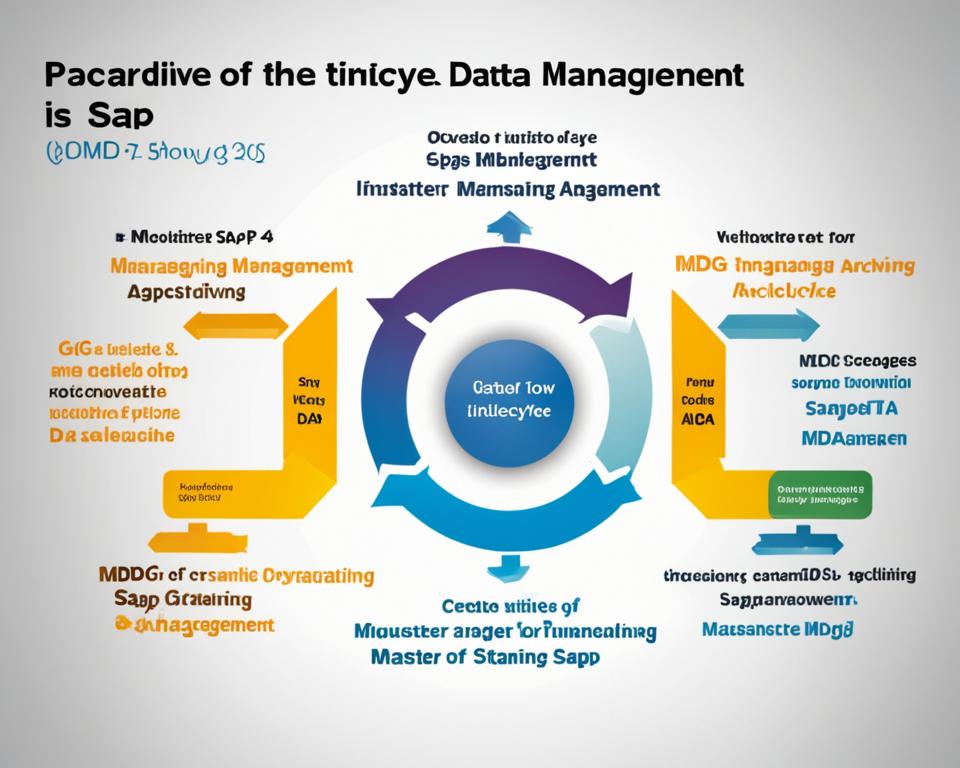Have you ever thought about how your business growth depends on master data? In today’s digital world, SAP MD – Master Data is key but often overlooked. It’s vital for strategic growth and making operations smoother in companies.
Using a strong approach to master data management helps businesses make better decisions. This boosts efficiency and performance. This article will show how SAP MD is important for business success. We’ll see how keeping data accurate and easy to reach can greatly help a company succeed in today’s complex business world.
Key Takeaways
- SAP MD is essential for business growth and operational efficiency.
- Master data management improves decision-making processes.
- Accurate and accessible data is crucial for strategic objectives.
- Understanding SAP MD enhances clarity in data handling.
- Effective master data management streamlines organizational operations.
Understanding SAP MD and Its Importance
SAP MD is key to managing business data in one place. It makes sure all data is right, up-to-date, and useful. This boosts how well master data is managed. Important parts of SAP MD include customer, product, vendor, and financial data. Each part helps make the data in an organization reliable and useful.
A strong master data system makes a company run smoother by giving easy access to trustworthy info. Data governance is a big part of this, making sure data is correct and follows the rules. This helps companies make better decisions and meet their goals.
| Data Component | Description | Importance in SAP MD |
|---|---|---|
| Customer Data | Information related to customers, including contact details and preferences. | Enhances customer relationship management and personalized services. |
| Product Data | Details about products, including specifications and pricing. | Facilitates accurate inventory management and sales forecasting. |
| Vendor Data | Information on suppliers and business partners. | Improves procurement processes and supplier relationship management. |
| Financial Data | Relevant financial information, such as revenue and expenditure. | Crucial for budgeting, forecasting, and financial analysis. |
In today’s world, knowing how SAP MD works is vital for any business. By focusing on master data management, companies can use their data fully.
The Role of Master Data in Business Growth
Master data is key to growing a business by providing a solid base for better operations. When companies handle their master data well, they make processes smoother, cut down on waste, and boost productivity. This leads to better communication among departments, making sure everyone has the same info.
Having reliable master data helps make decisions based on data, letting companies quickly adapt to market shifts and customer needs.
Many businesses show how good master data management can greatly improve performance. For example, a retail store used precise master data to better manage its stock, which led to a big jump in sales. Another case is a bank that used more accurate data to spot customer trends, which helped in making marketing efforts more effective and engaging customers more.
These stories highlight how master data can greatly improve various parts of a business, leading to more growth. By focusing on managing master data, companies can use powerful insights to drive strategic moves. This helps them serve their customers better and stay profitable over time.

| Company | Impact of Master Data Management | Business Growth Result |
|---|---|---|
| Retail Company | Optimized inventory processes with accurate data | Significant sales growth |
| Financial Institution | Identified customer trends for targeted marketing | Boosted client engagement |
Key Components of Master Data Management
In my exploration of master data management, I’ve found several key components. These include data governance, data quality, data integration, and data modeling. Each is crucial for making sure an organization’s master data is right, consistent, and reliable.
Data governance is about managing data’s availability, usability, integrity, and security in an enterprise. It helps define who owns the data and sets rules for how it’s used. Without it, data can be inconsistent across systems, affecting decisions.
Data quality means how reliable and accurate the data is. It’s key for making trustworthy decisions. Problems like duplicate entries or old info can hurt business operations. Checking data quality often helps fix these issues.
Data integration combines data from different sources into one view. It helps see everything clearly and improves teamwork. Not doing this can create silos, making it hard to get the full picture from data.
Data modeling is like a blueprint for an organization’s data. It makes getting to important info easier and helps use data for strategy. Bad models can cause wrong reports and confusion.
Getting these key components right is crucial for a strong master data management setup. Without them, data can be unreliable, and making good business decisions is harder. A well-connected approach to these components helps with growth and doing things better.
| Component | Description | Implications of Neglect |
|---|---|---|
| Data Governance | Management of data availability, usability, integrity, and security | Inconsistent data, reduced accountability |
| Data Quality | Reliability and accuracy of data | Poor decision-making, operational inefficiencies |
| Data Integration | Unification of data from various sources | Data silos, limited insights |
| Data Modeling | Structuring data elements and relationships | Misinterpretations, reporting inconsistencies |
Exploring SAP MD Topics & Content
In the vast world of SAP MD topics, knowing what’s important helps with data management. Companies focus on data quality and how to bring different data together. These areas help them make better decisions and get better results.
Managing data quality is key for good reports and choices. Many companies don’t pay attention to it until they face big data problems. By using strong data strategies and looking at case studies, I’ve seen how important good data management is.
Integrating different data sources is also crucial. It makes things run smoother and helps with analysis. Many companies have gotten better by working on data integration. These stories show how SAP MD topics can really help improve how a business works.
Data modeling is also vital for handling complex data. Good data modeling makes data relationships clear and storage better. I often look at case studies that show the best ways to model data. They give useful tips for businesses wanting to improve their data management.
| Topic | Description | Benefits |
|---|---|---|
| Data Quality Management | Ensuring consistency and accuracy in data. | Enhances reporting reliability and decision-making. |
| Data Integration Strategies | Combining various data sources into one coherent system. | Improves efficiency and enhances analytical capabilities. |
| Data Modeling Best Practices | Creating models for effective data relationships and structures. | Optimizes data storage and enhances data access. |
For more insights and advice, check out this resource. It talks about important techniques and tools for managing data well. Using these strategies can really help a company improve its data handling and grow.
Data Governance: Ensuring Data Integrity
Effective data governance is key for keeping data safe and sound. It includes rules, steps, and standards for handling data from start to finish. Having strong data governance helps follow the law and lowers the risk of data leaks.
Strong data governance brings many benefits:
- It makes data quality better, helping with smarter decisions.
- It boosts compliance with laws and standards.
- It helps manage risk, making data safer.
The table below shows how a good data governance framework helps with data integrity:
| Component | Benefit | Compliance Aspect | Risk Management Factor |
|---|---|---|---|
| Policies and Procedures | Set clear guidelines for data handling | Encourages adherence to regulations | Reduces chances of data misuse |
| Data Stewardship | Responsible oversight of data integrity | Ensures accountability in data management | Mitigates risks from unauthorized access |
| Data Quality Standards | Defines acceptable data quality levels | Aligns processes with compliance demands | Minimizes errors impacting decisions |
| Training and Awareness | Increases user understanding of data governance | Educates staff on compliance requirements | Fosters a culture of risk management throughout the organization |
Putting data governance first helps keep data safe and protects against risks. This way, organizations can handle data well and stay on the right side of the law.
Enhancing Data Quality for Better Decision Making
In today’s fast-paced business world, having high-quality data is key. It helps make better decisions. Companies that focus on data quality reduce risks and grab more opportunities. They use different ways to check data quality and fix problems early.
Methods to Assess Data Quality
Checking data quality deeply can cut down on risks from bad data. Some top ways to do this include:
- Data Profiling: Looking at data sources helps understand its quality and spot oddities.
- Validation Checks: Regular checks make sure data follows business rules.
- Consistency Analysis: This checks data across systems for uniformity and trustworthiness.
Using these methods builds a strong system for better decision making in companies.
Impact of Poor Data Quality on Business
Poor data quality has big problems. Companies might lose money, upset customers, and mess up internal processes. Here are some key points on how it affects them:
| Metric | Consequence of Poor Data Quality |
|---|---|
| Financial Losses | Errors and mismanagement can quickly increase costs. |
| Degraded Customer Experience | Wrong info can miss chances and lose customers. |
| Inefficient Processes | Fixing data issues wastes time and lowers productivity. |
Knowing these points and working on data quality helps guide a company’s strategy. I suggest looking into real-world examples, like SAP Ariba success stories. They show how good data management is crucial. For more on improving procurement and using data wisely, check out this detailed source.

Data Integration: Streamlining Business Processes
In today’s fast-paced business world, getting data to work together is key to doing things better. By using different ways to join data, companies can make their processes smoother. This lets different systems talk and work together well. It boosts productivity and gives a clear view of data for quick decisions.
There are many ways to join data together. ETL (Extract, Transform, Load) pulls data from various sources, changes it, and puts it in one place. APIs let different apps share data in real time, making things run smoother. Middleware connects different software, making sure they work together well.
Using these methods brings big benefits. Companies can look forward to:
- Increased data accuracy
- Reduced operational costs
- Enhanced collaboration across departments
- Faster access to critical information
By focusing on joining data together, companies can make their operations better. They can become more agile and quick to respond. Learning about ABAP in data integration shows how special solutions can solve specific business problems.
| Integration Technique | Description | Benefits |
|---|---|---|
| ETL | Extracts data from various sources and loads it into a data warehouse | Improves data consistency and quality |
| APIs | Allows applications to share data and functionalities | Enhances real-time data access |
| Middleware | Connects different applications to enable communication | Facilitates integration without altering existing systems |
Choosing a strong way to join data can change an organization for the better. It can lead to growth and new ideas.
Effective Data Cleansing Techniques
In today’s world, keeping data clean is key for making smart decisions. Regular cleaning keeps data accurate. This helps organizations make better choices.
Benefits of Regular Data Cleansing
Regular cleaning has many perks:
- Improved data accuracy: It fixes mistakes, making data trustworthy.
- Enhanced customer satisfaction: Right data means better customer service.
- Better reporting capabilities: Clean data means reports are more reliable.
Common Data Cleansing Challenges
But, there are hurdles to overcome:
- Data volume: Too much data can make cleaning hard.
- Inconsistent data sources: Different systems can lead to mixed-up info.
- Lack of skilled personnel: Not enough training can slow things down.
To beat these issues, plan carefully. Use the right tools and train your team well. For more tips on how to do this, check out 
Data Mapping: Bridging Systems and Processes
Data mapping is key in today’s businesses. It helps connect systems and manage data flow well. By matching data formats from start to end, it makes data more accurate and consistent. This boosts overall efficiency.
For data mapping to work, you need to know the data formats at both ends. A detailed plan makes sure data moves smoothly and correctly. This keeps important info in check across different systems.
Here are the main perks of good data mapping:
- Improves data accuracy by reducing errors during data transfer
- Enhances process efficiency through streamlined workflows
- Minimizes discrepancies in reporting by maintaining data integrity
- Facilitates regulatory compliance through standardized data formats
Let’s look at how data mapping changes things:
| Aspect | Without Data Mapping | With Data Mapping |
|---|---|---|
| Error Rate | High | Low |
| Process Efficiency | Reduced | Enhanced |
| Data Reporting Accuracy | Inconsistent | Consistent |
| Time to Insights | Longer | Shorter |
In summary, strong data mapping is vital for businesses wanting to improve their data flow and work better. By putting effort into solid mapping plans, companies can make sure their data fits the changing business needs.
Data Modeling for Enhanced Data Management
Data modeling is key to improving how organizations manage data. By using different modeling techniques, I can make data easy to organize and find. This makes storing and getting data back much faster and easier.
Popular modeling techniques include entity-relationship modeling and dimensional modeling. These methods help present structured data in a way that meets business needs. This makes it easier to make decisions. Data modeling also makes data easier to understand, which helps with work efficiency.
In a team setting, the benefits of data modeling are clear. Clear data models help team members understand and share data. This leads to better results. It supports enhance management and encourages making decisions based on data.
| Modeling Technique | Description | Use Case |
|---|---|---|
| Entity-Relationship Modeling | Visual representation of data entities and their relationships | Suitable for designing databases |
| Dimensional Modeling | Framework for organizing data into dimensions and facts | Used in data warehousing for analysis |
| Normalization | Process of reducing data redundancy | Improves consistency in data storage |
| Star Schema | Model that simplifies data warehouses by using fact tables connected to dimension tables | Enhances querying speed |

Leveraging SAP ERP and SAP S/4HANA for Master Data Management
Using SAP ERP and SAP S/4HANA can greatly improve how companies manage their master data. These systems help by making data handling better through their integrated systems. This makes different business processes smoother.
SAP S/4HANA is known for giving real-time data access. This means businesses can see their information clearly and quickly. They can make fast changes to keep up with market shifts. With SAP ERP, companies can bring all their data together. This makes sure the data is correct and the same in all departments.
- Integrated processes: SAP ERP and SAP S/4HANA make it easy to move between different areas like sales, finance, and supply chain management.
- Optimized operations: Automation saves time and cuts down on mistakes, making things run more efficiently.
- Enhanced data governance: Companies can keep their master data accurate, easy to get to, and follow rules.
- Scalable solutions: As companies get bigger, SAP ERP and SAP S/4HANA can handle more data and complexity.
Putting SAP ERP and SAP S/4HANA together creates a strong place for managing master data. This helps with making big business decisions and boosts overall performance.
The Future of Master Data and Technology Trends
The future of master data management (MDM) is looking bright, thanks to new tech trends. Technologies like data analytics and artificial intelligence (AI in MDM) are key to changing how companies handle their data. These tools will make things run smoother and help with big decisions.
Data analytics will be a big deal in MDM soon. By using it, companies can understand their data better. This means spotting trends, knowing what customers like, and finding ways to work better. It also helps them get ready for what the future might bring.
AI in MDM is set to change how we manage data. Machine learning can do simple tasks and make data more accurate. This means less work for people, so they can focus on big projects. Plus, AI can predict what will happen next, giving companies an edge.

Looking at these trends, the future of master data management looks exciting. With AI, data analytics, and new tech, companies will use their data better than ever.
| Technology Trend | Description | Impacts on MDM |
|---|---|---|
| Data Analytics | Using advanced techniques to analyze large datasets. | Enhanced decision-making and identification of trends. |
| AI in MDM | Application of machine learning to master data processes. | Increased automation and accuracy in data governance. |
| Predictive Analytics | Forecasting potential future trends based on historical data. | Better resource allocation and strategic planning. |
Conclusion
The role of SAP MD and master data management is crucial for business growth. I’ve shown how important it is to have strong master data strategies. These strategies improve data quality and help make better decisions.
Understanding how to manage data well is key. With SAP MD, companies can use their data to gain a competitive edge. In today’s data-driven world, focusing on this can lead to lasting success.
Master data management is essential, not just an option. Companies that focus on it tend to do better than others. By taking a comprehensive approach to data, businesses can shape their future in a more connected world.
FAQ
What is SAP MD and why is it important?
SAP Master Data (MD) is a key source of important business info. It’s vital for better operations and smart decision-making. It makes sure data is right, consistent, and easy to get to everyone in the company.
How does master data contribute to business growth?
Master data is the base for doing things better. By managing it well, companies can make workflows smoother, cut down on extra work, and make choices based on data. This helps them grow.
What are the key components of master data management?
Master data management includes data governance, quality, integration, and modeling. Each part is crucial for a strong master data plan. It ensures data is trusted, reliable, and follows the rules.
How can data governance impact my organization’s data quality?
Good data governance keeps data right and follows the rules. This affects data quality. By following set rules, companies can make their data more reliable and useful.
What techniques can I use to enhance data quality?
To make data better, use data profiling, check for errors, and look for consistency. These steps can cut down on mistakes and make your data more reliable.
What are the challenges of data cleansing?
Data cleansing faces issues like finding duplicates, making data formats the same, and fixing missing info. These problems can be solved by using clear data cleaning steps and checking data processes often.
How does data integration affect operational efficiency?
Good data integration makes processes smoother by letting systems talk to each other well. This means companies can use data better across all departments, making things run more smoothly.
Why is data mapping crucial for my business?
Data mapping is key because it makes sure data structures match between systems. This keeps data flow right and consistent. It helps make processes better and supports smart choices.
What role does data modeling play in master data management?
Data modeling organizes and structures data well, which is crucial for master data management. Using methods like entity-relationship modeling helps companies get and analyze data better. This leads to smarter decisions.
How can SAP ERP and SAP S/4HANA help with master data management?
Using SAP ERP and SAP S/4HANA makes managing master data better by offering integrated processes and quick data access. These tools give companies a clear view of their data. This improves how things work and makes data more accurate.
What future technology trends should I consider for master data management?
Look out for new tech like data analytics, artificial intelligence, and machine learning. These will make MDM better by helping with predictive analytics and letting companies meet future needs. This can lead to growth and new ideas.








